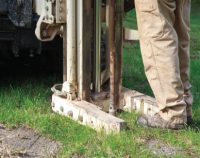Home Builders Guide to Earthquake Resistant Building Design: 5 PDH
$30.00
The student must take a multiple-choice quiz consisting of twenty (20) questions at the end of this course to earn PDH credits.Instructor: Raymond Bosek, PE
In this course, the student will review Chapters 1-4 from “Homebuilders Guide to Earthquake Resistant Design and Construction”, FEMA 232 – June 2006 prepared by the Building Seismic Safety Council for the Federal Emergency Management Agency of the Department of Homeland Security.
The student must take a multiple-choice quiz consisting of twenty (20) questions at the end of this course to earn PDH credits.
SPECIFIC KNOWLEDGE OR SKILL OBTAINED
This course teaches the following specific knowledge and skills:
- Background & History
- Above-Code Recommendations
- International Residential Code & IRC Seismic Design Categories
- Building Response & Concepts Concerning Site
- Other Hazards including Coastal Hazards
- Earthquake Resistant Requirements
- IRC General Earthquake Limitations
- Load Path
- Lateral Capacities
- House Configuration Irregularities
- Foundation Requirements including Concrete Foundations & Masonry Foundations
- Special Soil Conditions
- Foundation Resistance to Sliding Loads
- Special Considerations for Cut & Fill Sites
- Foundation Design and Reinforcement
- Interior Braced Walls Anchoring
- Floor Design & Construction including Wood Frame, Cantilevered & Concrete Slab-On-Grade
- Requirements for Blocking
- Floor Sheathing
CERTIFICATE OF COMPLETION
You will be able to immediately print a certificate of completion after passing a 20 question multiple-choice quiz. The quiz can be retaken unlimited times until a passing grade of 70% or better is earned. This course satisfies 5 professional development hours (PDH) of continuing education.
Related Courses
Geotechnical Subsurface Exploration for Roadways: 5 PDH
$30.00 Add to cartIn this course the student will understand the essentials of subsurface explorations for roadways with a comprehensive overview including site preparation, sampling methods, types of testing and methods, as well as standard guidelines and recommendations.Instructor: Raymond Bosek, PESPECIFIC KNOWLEDGE OR SKILL OBTAINED
This course teaches the following specific knowledge and skills:
- Discuss preparing for subsurface explorations
- Explain field reconnaissance and setting-up a exploration program
- Discuss sampling techniques and tools
- Explain various tests in addition to the standard penetration test (SPT)
- Understand guidelines for minimum exploration
CERTIFICATE OF COMPLETION
You will be able to immediately print a certificate of completion after passing a 20 question multiple-choice quiz. The quiz can be retaken unlimited times until a passing grade of 70% or better is earned. This course satisfies five (5) hours of professional development (PDH).
Preview CourseClick “Preview Course” to view prior to purchaseClick “Add to Cart” to purchaseDesign and Construction of Road Tunnels-Part 3 Design and Detailing: 5 PDH
$30.00 Add to cartIn this course the student will understand the concepts of the sequential excavation method as well as the design, purpose and construction of tunnel linings, immersed tunnels, and jacked box tunnels.Instructor: Raymond Bosek, PEIn this course the student will understand the concepts of the sequential excavation method as well as the design, purpose and construction of tunnel linings, immersed tunnels, and jacked box tunnelsSPECIFIC KNOWLEDGE OR SKILL OBTAINED
This course teaches the following specific knowledge and skills:
- Sequential excavation method
- Tunnel lining
- Immersed tunnels
- Jacked box tunneling
- Ground classsification
- Instrumentation and monitoring
- Construction methodolgies
- Ground control and watertightness
CERTIFICATE OF COMPLETION
You will be able to immediately print a certificate of completion after passing a 30 question multiple-choice quiz. The quiz can be retaken unlimited times until a passing grade of 70% or better is earned. This course satisfies five (5) professional development hours (PDH) of continuing education.
Preview CourseClick “Preview Course” to View Prior to PurchaseClick “Add to Cart” to Purchase and Access Quiz




